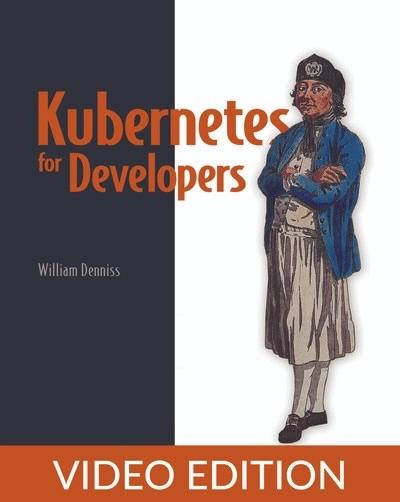
English | MP4 | AVC 1280×720 | AAC 44KHz 2ch | 9h 18m | 1.37 GB
A clear and practical beginner’s guide that shows you just how easy it can be to make the switch to Kubernetes!
Kubernetes for Developers reveals practical and painless methods for deploying your apps on Kubernetes—even for small-to-medium sized applications! You’ll learn how to migrate your existing apps onto Kubernetes without a rebuild, and implement modern cloud native architectures that can handle your future growth.
Inside, you’ll learn how to:
- Containerize a web application with Docker
- Host a containerized app on Kubernetes with a public cloud service
- Save money and improve performance with cloud native technologies
- Make your deployments reliable and fault tolerant
- Prepare your deployments to scale without a redesign
- Monitor, debug and tune application deployments on Kubernetes
Designed for busy working developers, this hands-on guide helps your first steps into Kubernetes using the powerful Google Kubernetes Engine (GKE) service. Learn how the GKE’s powerful automation tools can perform automatic checks and scaling, giving you more time to spend developing great applications. You’ll soon see that you don’t need to incur huge costs or have the manpower of an enterprise organization to get a productivity boost from Kubernetes!
Modern software needs to perform at scale while effectively handling load balancing, state and security. Kubernetes makes these tasks easier and more reliable for apps of any size. This book, written especially for software developers creating applications that run on Kubernetes, shows you exactly how to address these and other important issues.
Kubernetes for Developers covers everything you need to know to containerize and deploy an app on Kubernetes from the developer’s perspective. You’ll start by creating a small application you can run on a cloud-based Kubernetes cluster. Then, you’ll systematically explore best practices for stable long-term deployment, including scaling, capacity planning, and resource optimization.
What’s inside
- Deploying reliable web applications using automated operations
- Scaling up without an application redesign
- Monitoring, debugging, and tuning workloads
Table of Contents
1 Part 1. Getting started with Kubernetes
2 Kubernetes for application deployment
3 Why Kubernetes
4 Summary
5 Containerizing apps
6 Containerizing a server application
7 Using Docker Compose for local testing
8 Summary
9 Deploying to Kubernetes
10 Deploying an application
11 Imperative commands
12 Local Kubernetes environments
13 Summary
14 Automated operations
15 Updating live applications
16 Summary
17 Resource management
18 Calculating Pod resources
19 Summary
20 Part 2. Going to production
21 Scaling up
22 Horizontal Pod autoscaling
23 Node autoscaling and capacity planning
24 Building your app to scale
25 Summary
26 Internal services and load balancing
27 Ingress HTTP(S) load balancing
28 Summary
29 Node feature selection
30 Placing Pods
31 Debugging placement problems
32 Summary
33 Stateful applications
34 StatefulSet
35 Migratingrecovering disks
36 Generic ephemeral volume for scratch space
37 Summary
38 Background processing
39 Jobs
40 Batch task processing with Jobs
41 Liveness probes for background tasks
42 Summary
43 GitOps Configuration as code
44 Configuration as code the Kubernetes way
45 Rolling out safely
46 Secrets
47 Summary
48 Securing Kubernetes
49 Deploying node agents with DaemonSet
50 Pod security context
51 Non-root containers
52 Admission controllers
53 Role-based access control
54 Next steps
55 Summary
Resolve the captcha to access the links!